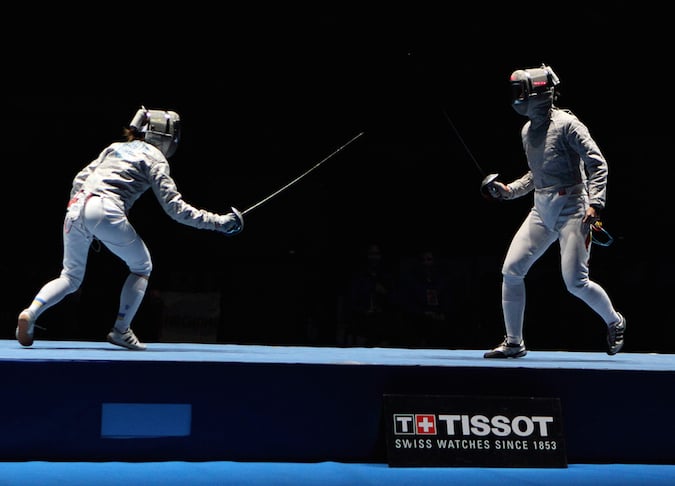Improve your balance in Fencing

Image credit: Shutterstock.com
As fencing sees continuous back and forth movement between the two fencers, it is important for the fencer to be stable on his feet and have good balance in order to score more hits.
En-garde Position
One way that fencers can maintain their balance is to bend their knees lower and widen the space between the feet by half a step when in the en-garde position, as it enables the center of gravity to be lower and hence making it less likely for them to topple.
Additionally, fencers should also distribute the weight evenly between both feet instead of leaning forward onto the front foot, as leaning on one foot can cause instability. The neck and back should be kept straight throughout, as a hunched back will cause the body to sway. The fencer should also position his body in a way that his shoulders and hips are aligned.
It is important that the fencer remembers to resume the en-garde position as it is a stance that provides the most stability in fencing. The fencer should always have his dominant foot forward, pointed towards the opponent, and the rear foot positioned so that both feet form an ‘L’ shape. The distance between the feet should ideally be shoulder-width apart, but cannot be less than the foot’s length as it will cause the fencer to be off balance.
Lunging
Additionally, when lunging, a fencer might exert too much force forward. In order to counter this, the fencer should rest his weight on the heel of his front foot and dig the heel into the ground. The fencer should also take note not to let the front knee go past the ankle when he is lunging, as it can upset his balance.
Parry
Parrying involves both retreating and deflecting the opponent’s sword, which can destabilize a fencer if done incorrectly. Fencers should leave parrying to the last possible minute and avoid using hand gestures that are too elaborate as it can cause the fencer to lean to the sides and be unstable on his feet.
To receive the latest updates on the happenings in the Singapore sports scene, or to find out more about some of the latest programmes on offer at ActiveSG, like our Facebook page here.





![ActiveSG Academies and Clubs Logo (Solid Colour)[8647]](https://www.activesgcircle.gov.sg/hs-fs/hubfs/ActiveSG%20Circle%202023Theme/images/ActiveSG%20Academies%20and%20Clubs%20Logo%20(Solid%20Colour)%5B8647%5D.png?width=150&height=65&name=ActiveSG%20Academies%20and%20Clubs%20Logo%20(Solid%20Colour)%5B8647%5D.png)




-01.png?width=200&height=141&name=Team%20Singapore%20Logo%20(Red)-01.png)



